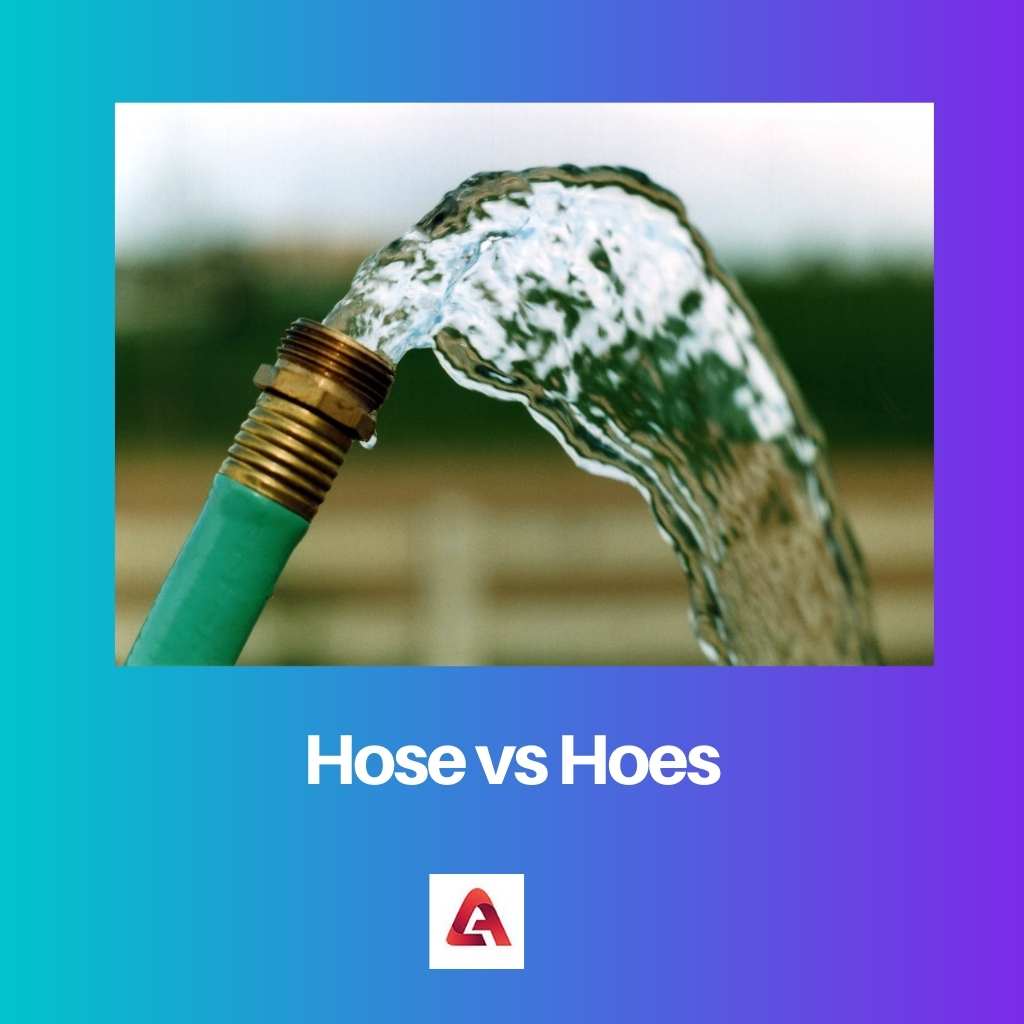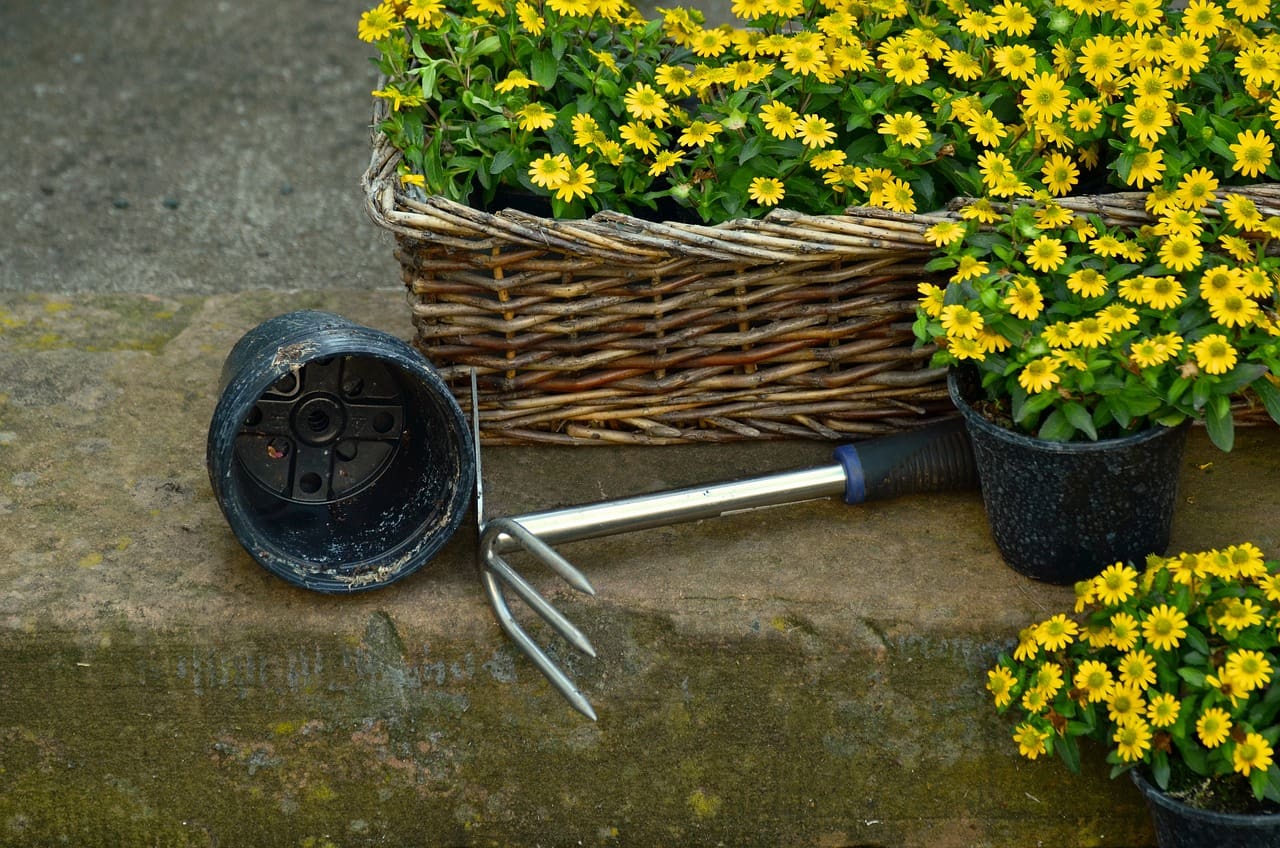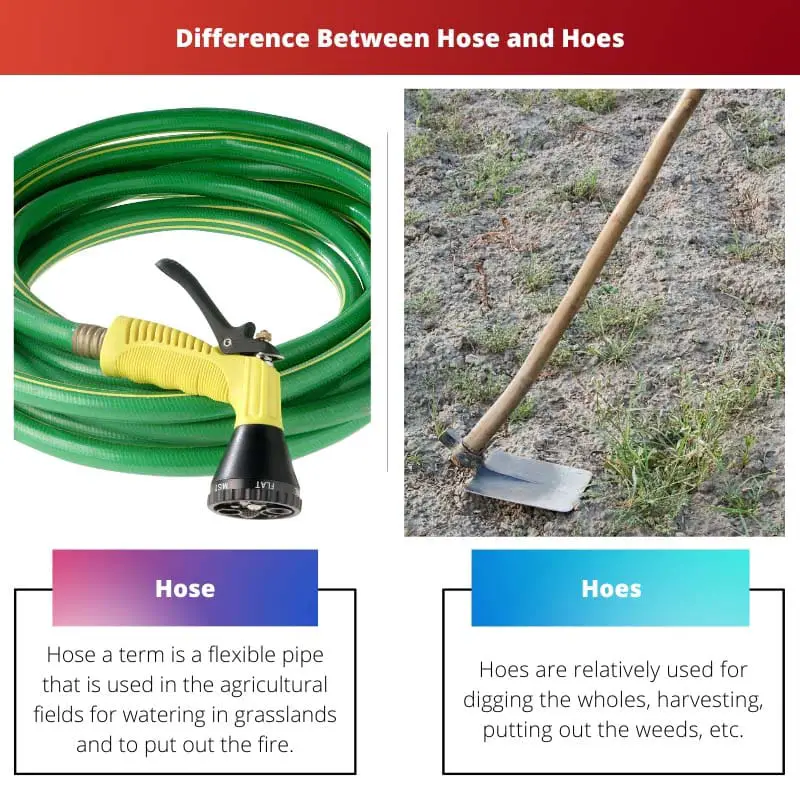Hose and hoes are the best media of agriculture in which hose stands for a flexible pipe that has a cylindrical shape. It is used for delivering water with many uses like planting, agricultural fields, or extinguishing fire.
Whereas the hoes are utilized mostly in the agriculture field for digging and cultivating the soils. It consists of a long handle that is perpendicular at the end of the hoes.
Key Takeaways
- A hose is a flexible tube used to transport liquids, such as water, while hoes are long-handled gardening tools used for breaking up soil and removing weeds.
- Hoses are commonly made of rubber or plastic and have various applications, including firefighting, gardening, and industrial processes. In contrast, hoes are made of metal with a wooden handle and are used primarily for agriculture.
- Hoses are designed for fluid transfer and are essential in various industries, while hoes are manual tools for soil cultivation and weed control in gardening and agriculture.
Hose vs Hoes
The difference between the hose and hoes is that the use of a hose is to transmit the water in the fields or grassland. On the other hand, the hoes are the best way through which soils and weeds are removed. It is useful mostly in agricultural fields. The hose has clamps, flanges, nozzles, and spigots that regulate water flow. However, the hoes are designed with a long handle and a uniform blade.

A hose term is a flexible pipe that is used in agricultural fields for watering in grasslands and putting out fires. It is a perfect and short way to supply water in the fields.
It has a proper length so that it can be used for long-distance. In ancient times, this product was created by using leather, but from the 19th century hose are designed from natural rubber.
Hoes are relatively used for digging holes, harvesting, putting out weeds, etc. The hoes are invented by Enlil, head of the Council of the Gods.
It has been trending since ancient times. Mainly, it takes part in the agricultural fields. It appears in a thin flat metal blade that joins with a handle. Now, it is being used for many purposes.
Comparison Table
| Parameter of Comparison | Hose | Hoes |
|---|---|---|
| Shape | The structure of the hose is cylindrical. | Hoe has a shape like a long-handled with thin metal blade. |
| Material | Hoses are made of nylon, polyethylene, PVC, polyurethane, and natural rubbers. | While hoes are a mixture of metal and wood. |
| Uses | Hoses are specially designed for watering the fields and grassland. | It is mostly used for digging the land, removing weeds, harvesting, etc. |
| Feature | The hose is used in different areas which are flexible to use. | It is used for different purposes which has versatility. |
| Discovered | It was discovered by Jan Van Der Hyden. | On the other hand, hoes were discovered by Enil. |
What is Hose?
Hoses are special long pipes with the proper length and size. It is good to use at a distant place for watering.
Due to some special features, the hose is used in every region, as it saves a lot of time. Now, it is used in a big platform for several purposes.
In this product, synthetic and natural rubbers are used for design. Through it, water or any fluids can easily flow. Now, it is designed in different colors.
Hoses are divided into three types: Delivery hose, Suction hose, and Hose reel hose. The delivery hose is attached at the end of the pump, which has a higher pressure in comparison to atmospheric pressure.
Second, the suction hose is joined at the pump’s side. At last, the hose reel hose is formed of reinforced rubber along a swivelling joint.
Along with its structure, the hoses are merged with applications and performance. It is suitable for most big areas to put moisture on it. In other words, hoses are said as pipes as well as tubes.
The tube or pipe is made of nylon, PVC, polyethene, polyurethane, and rubbers. The rubbers are may be natural or synthetic. It fulfils the major requirements of fields, ground, and extinguishing the fire.

What is Hoes?
Hoes are an ideal product to use in fields as well as ground for removing weeds, digging the soil for plantation, cultivating, etc. Recently, hoes have been modified by adding some special features as well as looks.
The modified hoe is made of metal. In ancient times, the hoes are shaped like the pick-like mattock. But, today, it is modified to make it more valuable. It contains versatility. It occurs with a long handle and a sharp metal blade at the end.
However, the hoes are classified into four kinds: Dutch hoes, draw hoes, heart-shaped hoes, and scuffle hoes. Every hoe is useful in agriculture fields.
But from them, the ideal hoe for weeding is scuffling hoes. In other words, scuffle hoes are known as loop, hoop, and stirrup hoes.
Dutch hoe consists of a two-edged cross-blade that is simple to use with a sharp blade. At the same time, the draw hoe has perfect shapes, and sizes, and proper dimensions. At last, the heart-shaped hoe is very useful in crushing the ground surface.

Main Difference Between Hose and Hoes
- Hose includes a lot of materials but mostly nylon, PVC, polyethene, polyurethane, and natural rubbers. On the other hand, the hoes are prepared with a mixture of metal and wood.
- Hoes are used in watering the fields and gardens while hoes have a multi-use like digging the soil, harvesting, and for weeds removable.
- It is a flexible pipe that is easy to use. But the hoes have a lot of versatility.
- The structure of the hoses is a cylindrical portion. On the other hand, the hoes include a long handle along with a metal blade.
- Hose was invented by Jan Van Der Heyden, while the hoes were discovered by the great scientist Enil.

- https://www.jbe-platform.com/content/journals/10.1075/ml.3.2.02ber
- https://www.jbe-platform.com/content/journals/10.1075/ml.2.2.03ber




